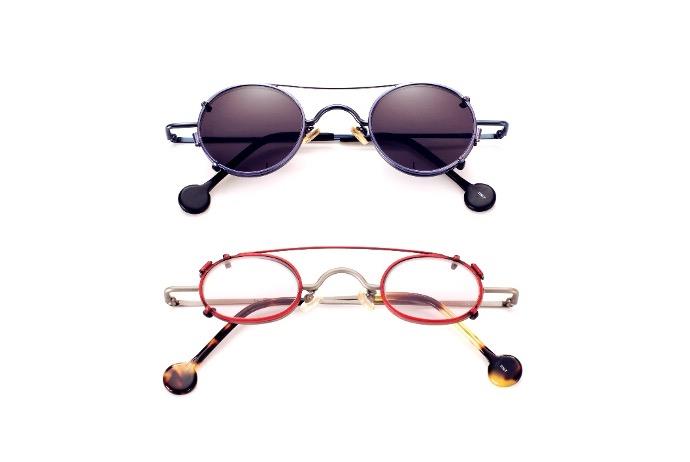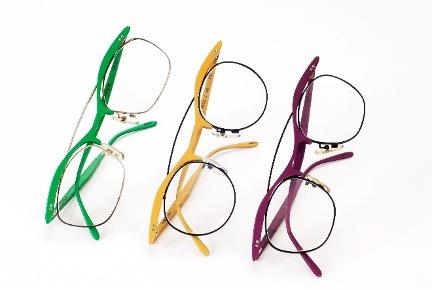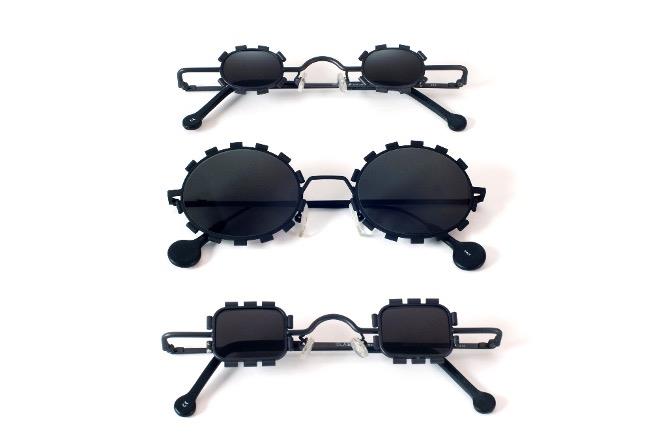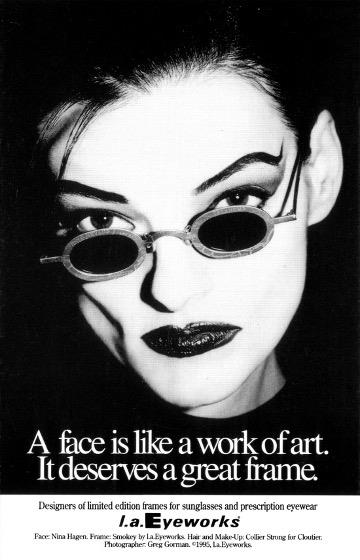
California’s Orange County in 1960s might not sound like the most strait-laced places and times to grow up in, but l.a.Eyeworks founders Gai Gherardi and Barbara McReynolds say they were part of a small and rebellious counterculture community that eschewed the conservatism of the ‘Orange Curtain’.
Friends since the age of 15, Gherardi and McReynolds, not only trod similar personal paths, but professional routes too, with both working as dispensing opticians in the 1970s. Both also harboured the dream of owning their own practice that challenged the established norms of eyewear at the time. The l.a.Eyeworks store opened in 1979 and, shortly after, the duo began customising golden era Bausch + Lomb Ray-Bans and Shuron frames in typically rebellious fashion – think drilling, custom dyes and sandblasting. With a finite resource of deadstock products, Gherardi and McReynolds turned their attention to designing their own collections for true creative freedom and expansion.
As the wholesale side of the business developed, more frames were added, but rather than bringing in a slew of new silhouettes, the duo opted for simple three shape line ups in the very early years. What set the ranges apart was that each style would be available in a palette of 12 colours – beginning a lifelong obsession with hues, tones and textures.
Stop watch
Stop Watch is one of several different special edition frames created as seasonal gifts for l.a.Eyeworks accounts around the world as a token of the brand’s appreciation. Many, like Stop Watch, weren’t even meant to be worn, but were created to reinforce the ethos behind the company. Some accounts used the pieces for practice displays, while others tucked them away in archives and a few sold them on. ‘Some were simply puzzled,’ jokes Gherardi. ‘The interior of the frame is emblazoned with the brand’s well-known catch phrases, displaying our love for visual riddles and puns, while investigating the architectural aspects of private and public space that eyeglasses represent,’ she adds. Making these special edition, artisanal frames has become much harder in recent years, but they could make a comeback in the near future. Another reason, if it were needed, to open an account.
Bodhi and Luck
Ophthalmic frame Luck and its sunclipped sibling Bodhi were created from a desire to design a simple looking frame with tubular metal and elegant lines all the way from the end piece to the bridge. Convention in 1990 dictated that rim locks would have been mounted at the rear of the frame, but Gherardi and McReynolds don’t like established eyewear convention, so the rim locks were mounted on the outer edge of the frame, adding visual interest and contrast with the uncluttered temple tubing. ‘Many considered it blasphemous but it was a moment when displaying honesty in design was part of the conversation, so we questioned the prevailing notion of trying to hide everything mechanical in eyewear,’ says Gherardi.
 Bodhi and Luck
Bodhi and Luck
Pluto I, II and III
The Pluto series from the late 1980s marks a pre-CAD manufacturing and design milestone for the company. Gherardi explains: ‘We were manufacturing in a wonderful, very traditional French factory that was basically using pantograph cutting and you could use that acetate equipment to cut aluminium. But it really hadn’t been done a lot – some designers had used aluminium elements but not so much in this way. That was challenge one. The second challenge was assembly, as you couldn’t really seat a screw in aluminium at that time because it soft than than the screw itself. So, we had to use a hex nut to hold the hinge screws on the interior side of the frame, which created challenge three, because the assembly not only had to be done by hand, but you magnified the chances of scratching the paint right at the end of the production process.’
 Pluto I, II and III
Pluto I, II and III
Bondito, Bondo and James
The old guard of the optical world who deemed the floating rim lock barrels of Bodhi and Luck to be ‘blasphemous,’ would have choked on their maple syrup pancakes when Bondito, Bondo and James were launched. Designed as a metaphorical two fingers, the frames took the visible rim lock theme and amplified it, even carrying a ‘spare tyre’ rim lock on the inside of the temple to hold a spare screw. ‘The frames capture the spirit of how we work, where one idea informs the next. The inside joke of responding to criticism by amplifying it was mostly playful, and we had so much fun telling the story of these frames,’ says Gherardi.
 Bondito, Bondo and James
Bondito, Bondo and James
Smokey
The signature portraits photographed by Greg Gorman remains one of the brand’s most iconic campaigns and featured famous faces from Jodie Foster to Paul ‘Pee-wee Herman’ Reubens. Emblazoned with the street maps of southern California, the Smokey frame from 1994, worn in this portrait by German punk singer Nina Hagen, is a love letter to the company’s southern California heritage, as well as an early experiment with laser engraving. ‘In this era of geo-tracking and Google maps, it’s funny to think back now that every southern Californian worth their salt had a Thomas Guide map book in their car,’ says Gherardi. ‘It was essential to navigating, and the Thomas Guide is literally what we sent to our factory in Italy for the engraving of map details on the frame.’
 Smokey
Smokey
